- Hala Schepmann
- https://inside.sou.edu/chemistry/faculty/schepmah.html
- Chair of Chemistry and Physics and Professor of Chemistry
- ASCEND
- https://wou.edu/ascend/
- Southern Oregon University
- Maria (Mia) Bertagnolli
- Director, Center for Teaching and Advising and Professor of Biology
- ASCEND
- https://wou.edu/ascend/
- Gonzaga University
- Chrystal Bruce
- Professor of Chemistry
- ASCEND
- https://wou.edu/ascend/
- John Carroll University
- Patricia Flatt
- https://wou.edu/wp/flattp/
- Professor
- ASCEND
- https://wou.edu/ascend/
- Western Oregon University
- Katrina Hutchins
- http://www.linkedin.com/in/DrKatrinaHutchins
- President and CEO
- ASCEND
- https://wou.edu/ascend/
- Re-Source Solutions
- Sarah Kirk
- http://www.linkedin.com/in/sarah-kirk-382ba133
- Associate Provost
- ASCEND
- https://wou.edu/ascend/
- Willamette University
- Liz Roberts-Kirchhoff
- Assistant Dean for Academics
- ASCEND
- https://wou.edu/ascend/
- University of Detroit Mercy
- Cheryl Swanier
- Associate Professor
- ASCEND
- https://wou.edu/ascend/
- Claflin University
- Victoria Turgeon
- Professor of Biology & Neuroscience; Co-Director of MS in Community Engaged Medicine; Academic Director of Prisma Health Partnerships
- ASCEND
- https://wou.edu/ascend/
- Furman University
- Mary Watson
- Associate Professor
- ASCEND
- https://wou.edu/ascend/
- The Citadel
Public Discussion
Continue the discussion of this presentation on the Multiplex. Go to Multiplex










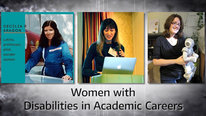
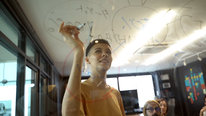
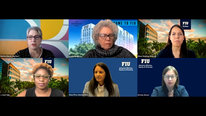
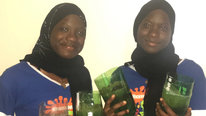
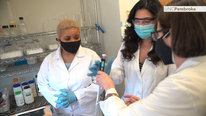

Hala Schepmann
Chair of Chemistry and Physics and Professor of Chemistry
Thank you for viewing our NSF ADVANCE ASCEND video, “Advancing STEM Careers by Empowering Network Development.” We are especially interested in feedback from faculty and administrators on methods and policies that have been effective in supporting and advancing the careers of diverse faculty at your universities. We also welcome your ideas on how to effectively measure the impact of these strategies.
In addition to our Steering Committee, this work has been supported by our Advisory Board and our evaluation partners at Education Development Center (EDC). For more information about our project, please see wou.edu/ascend and https://www.facebook.com/NSFADVANCE.ASCEND.
Nuria Jaumot-Pascual
Research Scientist
I really liked that the project focuses on the individual, the network, and the systems. Very often, the systems are overlooked and things stay the same because it doesn't matter how much women change if the systems continue having barriers that are directed to women.
I was a bit surprised at the focus on one's voice through literal voice training. I would like to hear more about this choice. What motivated this project's designers to include voice training in the project? And now that project participants have received some voice training, what has been their response? Do you have data about it?
I would also like to learn more about what are expected outcome of this project and how you plan on measuring/observing them.
It seems like a very complex project. I look forward to learning more about what you accomplish and what you learn through this work.
Chrystal Bruce
Professor of Chemistry
Thank you for your comment. We agree wholeheartedly that systemic change is crucial. We also know that more inclusive policies are beneficial for everyone.
Voice positioning training was selected as our initial focus because it helps participants reflect on when and how their voice is being or not being heard or included and empowers them to position their voice as well as amplify the voices of others in the various spaces and situations in which they find themselves.
One of our primary goals is to create agents of change by providing education, training and professional support to a) equip women for promotion and leadership positions and b) equip academic leaders to develop inclusive campus policies and cultures. Our success will be measured in part by the number of participants who obtain promotion to full professor and by the changes in policy that are implemented at participant institutions. In addition to quantitative data, we plan to measure the participants' feelings of support and inclusion and learn how it impacts their job satisfaction. We also expect that participants will themselves become agents of change during the project period and beyond.
This project is indeed complex and multifaceted, in part to acknowledge the diversity of challenges faced by our participants. In addition to surveys and written feedback, the steering committee meets informally with participants to learn more about their individual challenges. We have already found many of the resources needed to support each other within the group. By regularly checking in, we are able to be flexible in the design of our programming to best meet the needs of the participants. We look forward to sharing what we learn with the broader community
Nuria Jaumot-Pascual
Nuria Jaumot-Pascual
Research Scientist
Thanks for your detailed response. In the 75 participants across the three regions, how many are women of color? Is the data collection and analysis going to focus on the special barriers faced by these women?
Liz Roberts-Kirchhoff
Assistant Dean for Academics
Active interventions are required to systematically address the barriers women face to professional advancement — particularly for those women faculty who face additional hurdles of being members of an underrepresented minority, having a visible or invisible disability, having been a first generation college student, or experiencing other areas where their multiple intersectional identities compound one another’s adverse effects. We have asked our participants to self report on these intersectional identities. As we learn more from our participants about their challenges through surveys, written feedback, and meeting with alliances or participants, we are tailoring the programming and supports-including those at the regional meetings-to the participants.
Overtoun Jenda
Assistant Provost and Professor of Mathematics
I really like the way the project is structured. Is this a collaborative research grant? How do you recruit participants and mentors? How do you match them? Can men be involved as mentors and be part of the network? Keep up the good work.
Mary Watson
Associate Professor
Our Steering Committee is composed of nine faculty from primarily undergraduate institutions across the three target regions (Southeast, Midwest, Northwest). Our Steering Committee collaborates to scaffold activities for peer mentoring networks, plan in-person and online regional meetings, and conduct related research/assessment. In terms of NSF award structure, John Carrol Univ. is the lead institution (previously Willamette Univ.). Sub-awards are made to eight additional institutions to support Steering Committee members in design and administration of grant activities.
Participants are organized into discipline-specific peer-mentoring groups within each of the three target regions. Each target region has multiple faculty alliances and one administrator alliance. To recruit faculty and administrator participants, we used an online application process and worked to distribute information about the program through our own professional channels.
With our current structure, there are no official mentors assigned to the peer mentoring groups. Each year, we have a consultant who works with the Steering Committee to develop a theme and offer professional development opportunities for alliances. For example, our first consultant was Dr. Katrina Hutchins, who is an expert on voice positioning. Each month, Dr. K prepares a video that aligns with one chapter in her book. In monthly alliance meetings, participants have an opportunity to discuss specific issues related to the video/chapter, although they are free to discuss any other salient issues during their time together. In essence, the Steering Committee (in collaboration with consultants) provides a framework for peer mentoring to occur within alliances, although the alliances themselves are able to function autonomously. The Steering Committee also hosts annual (or more frequent) regional meetings where all participants from a given region gather and are able to work directly with the Steering Committee and annual consultant. Throughout the program, the Steering Committee and administrator participants serve as informal mentors to faculty participants.
Faculty participants are all female-identifying with both male and female-identifying administrators.
Stephen Alkins
Diversity, Equity, and Inclusion Officer
I am also intrigued about the outcomes of this work particularly from an ability to recruit allied support at other institutions. There is much research (and much more to be done) being conducted on increasing equity for women and other underrepresented minority faculty. One area I have not seen as much work on is guidelines for identifying, building, and sustaining allyship. What is your process for identifying and training allies (culturally responsive mentorship, leveraging privilege, etc.)?
Also, how are you all thinking about your participants are advocating and communicating effectively around accountability of these systems to create and uphold new policies?
Like others, I find it interesting that there is a focus on voice training and effective communication. Have you all thought about providing training to institutional departments on active listening to address the "diversity fatigue" phenomenon
Mary Watson
Associate Professor
We have included an administrator alliance in each of our three regional networks, recognizing that administrators are often in a position to affect systemic change at their institutions. In addition, administrators are from institutions that are also represented within our faculty alliances in order to support multiple (when possible) change agents at partner institutions. Positive outcomes, for this grant cycle, will likely be for those institutions that are represented among our faculty and administrator participants. However, our model for regional peer-mentoring groups could be useful for women STEM faculty across institutional types (i.e., beyond primarily undergraduate institutions).
One way that we are supporting our participants in affecting change at their institutions is by building a repository of institutional policies that support gender equity and inclusion. We are collecting documents from across partner institutions related to: tenure and promotion, work-life balance, campus climate, and more. Our intent is for this repository to serve as a foundation for discussing ways to support women in STEM at primarily undergraduate institutions, and beyond.
In terms of "accountability", administrator participants are working on institutional development plans. Administrators have identified issues that they would like to tackle at their institutions and they are iteratively building plans to address those issues. We provide administrators with opportunities to refine their plans as they learn about new strategies and tools through their involvement in the ASCEND partnership.
Related to "advocating" and "communicating" for systemic change, we hope that our first-year focus on voice positioning has equipped participants with the confidence and skills needed to hold their institutional systems accountable for supporting the success of women STEM faculty (and other groups). We are anecdotally hearing from participants about inspiring stories related to them positioning and amplifying their voices. We will be working with our partner, Education Development Center (EDC), to formally collect and analyze participant experiences in the future.
Currently, our program is providing voice positioning support to faculty and administrator participants only - through our collaboration with Dr. K. I agree that Dr. K's Voice Positioning System could be used to provide a fresh take on institutional diversity training. Her book provides an approachable and impactful framework that can be used across institutions and contexts.
Ann Gates
Excellent video and approach. In particular, the involvement of an administrator alliance is critical and establishing a supportive group of women faculty. How often does the group meet, and what are your strategies to keep them engaged?
Sarah Kirk
Associate Provost
Thank you. We agree that it is important not just to provide support for our faculty participants but also our administrative participants that are working to create institutional change. Each alliance, whether faculty or administrator, meets once a month with their group virtually. We meet as a whole region in person (when possible) once a year. This year, after a virtual regional gathering in the fall, we are meeting with all three regions together virtually this summer and will begin in person meetings next fall. Steering committee members meet with individual alliances to provide additional support.